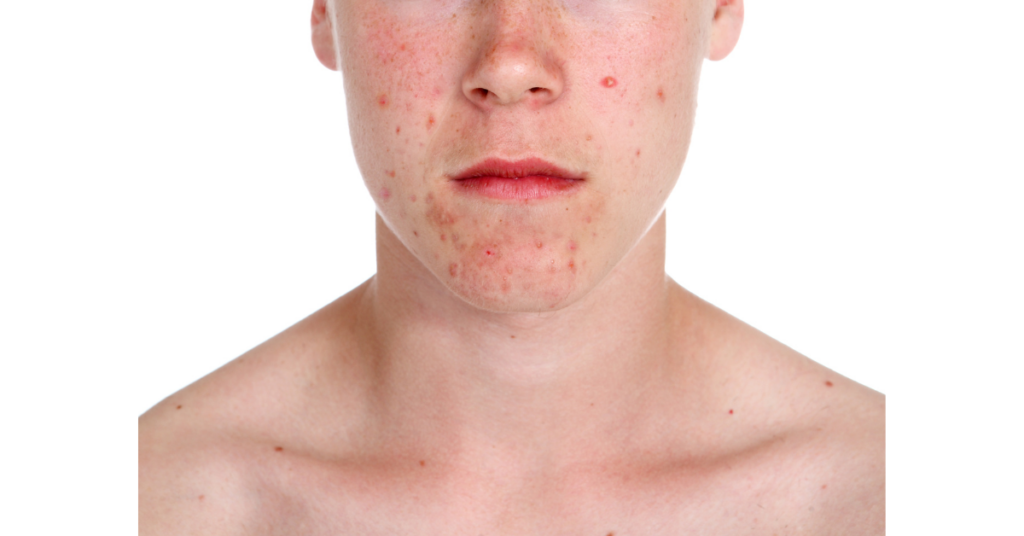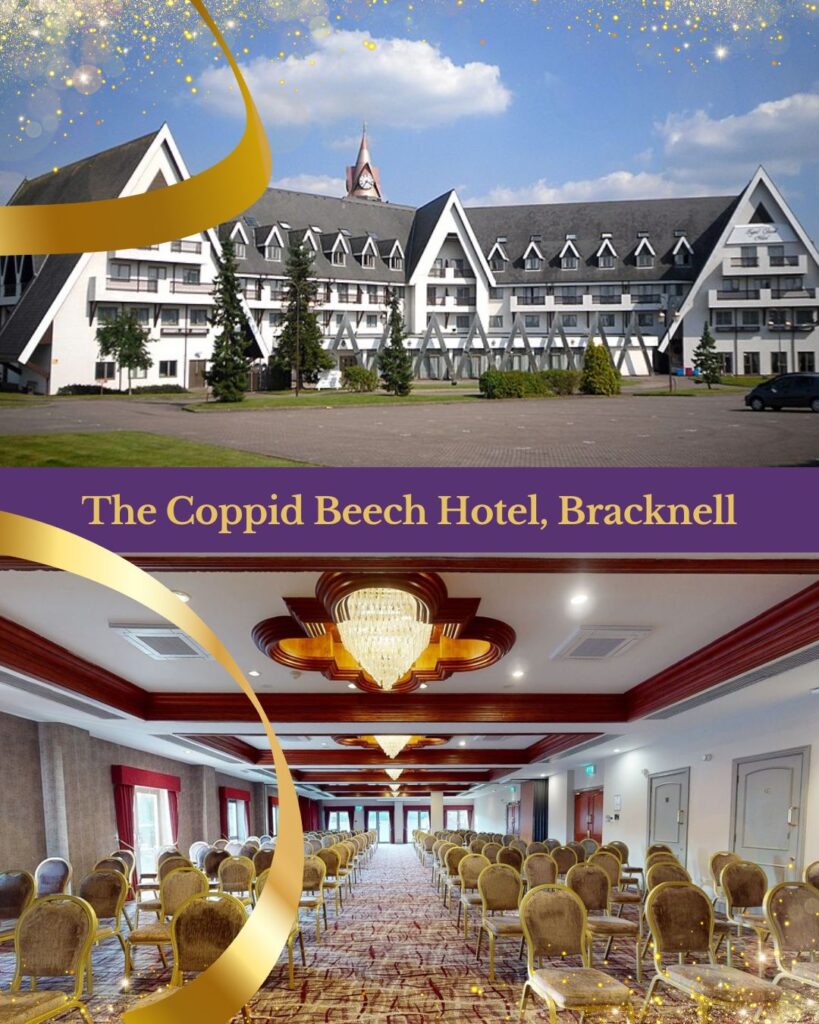Acne – Can Complementary Medicine Really Help?
Acne is a skin condition that affects mostly males but also females as young as 12 and subsides around the age of 24 (though acne can occur in adulthood) affecting the face, neck, and shoulders.
It is more common in men because they produce more testosterone, a hormone that plays a part in the production of an oil called sebum.
Acne is caused when pores in the skin get blocked with this oil called sebum, which, due to its sticky nature, traps bacteria which then multiply causing the skin to get inflamed.
In people without acne the sebum lubricates the skin and is essential to good health, so an overproduction of oil as seen in acne is not due to bad hygiene but is linked with hormonal activity.
Symptoms
Spots, or ‘whiteheads’ as they are called, along with blackheads, occur on the face, neck, shoulders, and back. The spots are painful, and the skin is inflamed, red and swollen.
If cells beneath the surface of the skin become filled with sebum, then whiteheads develop; when sebum reacts with oxygen then blackheads occur. When whiteheads build up and eventually rupture then the acne spreads, resulting in pain and further inflammation. Quite severe scaring can result.
What Causes Acne?
There is no specific cause for acne, yet it is known that some things can aggravate the condition such as:
- Oily skin
- Cosmetics
- Menstrual cycle
- Steroids
- Stress
- Eating too much junk food
- Rubbing and over-washing the skin
- Nutritional deficiencies
- Exposure to pollutants
Supplements that may help with this condition
Zinc is an effective antibiotic and helps prevents scarring. It is recommended that sufferers take 30 mg of zinc two or three times a day for a few months, then 30 mg per day thereafter.
However, you need to be patient, as it can take up to twelve weeks before any improvement is seen. Two research studies support the use of zinc in the treatment of acne.4,5
Vitamin A was beneficial to those who had severe acne.6
As to the huge quantities used it is only advisable to take such doses under the supervision of a healthcare practitioner, as high doses are toxic.
Vitamin B6 may benefit those women who have acne flare-ups around menstruation time.7 It is thought that deficiencies of this nutrient have been seen in acne sufferers. Therefore, take 50 mg three times a day.
Vitamin B5 (pantothenic acid) is referred to by healthcare practitioners as the anti-stress vitamin. Take 50 mg of this supplement three times daily.
According to the following study8 very high dosages of Vitamin B5 was given to people with acne. The individuals were given up to 10 grams per day, and the results were favourable. They also experimented with a cream containing Pantothenic acid, applied up to four times a day. The more severe conditions took anything up to six months before the condition got better with less severe acne responding within two months.
Vitamin B3 (niacinamide) is usually taken orally, but a gel containing 4% Niacinamide applied twice daily was found to help in the treatment of acne.8
Although more research is needed, the nutrients mentioned here are often recommended by healthcare practitioners as current research indicates that they may well be helpful.
Vitamin B complex: Essential for healthy skin tone as it improves blood flow to the surface of the skin. Take 100 mg three times daily (use a high potency formula).
Essential fatty acids: Fatty acids keep the skin smooth and soft, repairs damaged skin cells and dissolves the fatty deposits that block pores. Take either flaxseed oil or primrose oil. Use as directed on the label.
Chromium: Very helpful for all skin infections. Use as directed on the label.
Herbs
Studies support the claim that the following herbs can help with the treatment of this condition. The herbs mentioned here have historically been considered beneficial in the treatment of various conditions including acne. Therefore, they are often recommended by healthcare practitioners.
Tea tree oil: An antiseptic as well as a natural antibiotic. Tea tree oil was used in the treatment of acne and compared against the effectiveness of benzoyl peroxide.
Although the tea-tree oil failed to work as quickly as the benzoyl peroxide, the tea-tree oil method had far fewer side effects.10
Apply neat or diluted in a few drops of warm water onto the skin up to three times a day.
Burdock: When taken internally this herb has a cleansing action on the body.11 Burdock root comes in various forms. A tincture (liquid) may be taken in 4 ml amounts per day. Dried root preparations in a capsule or tablet form can be taken at 2 grams three times per day. Many herbal preparations combine burdock root with other alternative herbs, such as yellow dock, red clover, or cleavers.
Vitex (Agnus Castus): If your acne flares up around the time of your menstrual period then this herb should help.12, 13
Take 40 drops of vitex extract in a glass of water. It is also available in capsule and tablet form – refer to label for dosage. Vitex can be taken for up to one year.
More Information on dealing with Acne
Steam Sauna for the face: If your condition is very painful or severe then do not use steam saunas as they may only worsen the condition.
In an enamel saucepan, boil 2 pints of water adding 4 tablespoons of the following herbs: Red clover and lavender or strawberry leaves. Simmer for 10 minutes. Remove from the heat and sit with your face over the steam for up to fifteen minutes.
You can place a towel over your head if you wish. To finish off – splash your face with cold water. However, asthmatics need to take care with this method.
Clay mask: Blend 2 teaspoons of honey and one teaspoon of clay powder, spread the mixture over your face and leave on for 15 minutes. Rinse with lukewarm water. Be careful to avoid eye area.
Lifestyle Advice
Washing: Be gentle with your skin, use only a natural soap, and do not over scrub. Over-washing can cause the condition to worsen. Avoid dirty hair falling onto the skin by keeping your hair clean and off your face and, if you shave, never use an electric shaver but opt for a wet shave.
Make-up: Only wear make-up made with natural ingredients and that is water and not oil-based. Always remove makeup at night in order to let the skin breathe. Clean make-up equipment such as sponges and brushes properly so as not to contaminate other areas of the face.
Friction can make pimples rupture so avoid resting your face on your hands, and avoid holding your phone against your face. Bra straps and jumpers made of itchy fibre can aggravate, further inflaming the skin, so be careful about your clothing too.
Squeezing spots can cause and spread infection, and cause even more inflammation.
Stress can bring about hormonal changes that can also trigger a flare-up. Exercise, stress response management, such as mindfulness, a whole food, plant-based diet, and moderate exposure to the suns rays will help.
Finally, if possible do try to avoid topical or oral steroids unless your situation is really severe and your health professional has advised that these strategies are necessary. These are strong drugs that have undesirable long-lasting side-effects.
Further reading and research
Here are ten published studies that provide evidence that natural therapies and healthy lifestyle modifications can improve acne, along with a brief overview of each study’s findings:
- Engineering the Skin: Embodied Experiences of Healing from Acne Among YouTube Vloggers by MP Dotson and M Lafrance (2024)
This study explores the experiences of YouTube vloggers who discuss their journey with acne. It highlights how their acne-healing practices revolve around permanent lifestyle changes, particularly regarding diet and gut health. Many vloggers mention other lifestyle modifications as part of their acne management strategy. Read more.
- A narrative review on the Role of Yoga on Polycystic Ovary syndrome by J Mirase, V Kuchewar, and S Parwe (2023)
This review discusses the role of yoga as a natural and complementary therapy in managing Polycystic Ovary Syndrome (PCOS), which often presents with acne. It emphasizes that lifestyle modification, particularly through yoga, is an essential factor in treating PCOS. Read more.
- Relação entre Doenças Psicossomáticas e Disfunções Dermatológicas by ES Gonçalves and MHP Costa (2023)
This study delves into the broad spectrum of acne treatment, highlighting a variety of drugs and cosmetics for different stages of acne. It underscores the importance of understanding the complex interplay between psychosomatic diseases and dermatological dysfunctions, which can impact acne treatment. Read more.
- Inositol and lipoic acid treatment in patients with polycystic ovary syndrome by T Boro (2023)
This research investigates the effects of inositol and lipoic acid treatment on PCOS symptoms, including acne. It emphasizes that lifestyle modifications, along with medical interventions, are crucial in the treatment process. Read more.
- Recent advancements in nanocarrier-based therapy against Acne: The role of biosurfactants and status of patents by M Ghosh, D Singh, and A Singh (2023)
This review discusses the pathophysiology of acne vulgaris and highlights treatment options that include topical and oral medications, light therapy, and lifestyle changes. It focuses on the advancements in nanocarrier-based therapies for acne. Read more.
- The benefits of a multidisciplinary approach in the treatment of young women with polycystic ovary syndrome–combining medicine and psychology by E Jeremić (2023)
This study reviews the literature on the psychological aspects of PCOS and emphasizes the importance of a multidisciplinary approach, combining medicine and psychology, in treating young women with PCOS. It highlights the role of lifestyle modifications and cognitive-behavioural therapy in managing symptoms, including acne. Read more.
Please note that while these studies provide insights into the role of natural therapies and lifestyle modifications in acne treatment, they may also encompass broader topics or related conditions like PCOS. It’s essential to review each study in detail for specific findings related to acne.
References
- Fulton JE Jr, Plewig G, Kligman AM. Effect of chocolate on acne vulgaris. JAMA 1969;210:2071–74.
- Anderson PC. Foods as the cause of acne. Am Family Phys 1971;3:102–3.
- Gaby A. Commentary. Nutr Healing Feb 1997;1,10,11.
- Hillstrom L et al. Comparison of oral treatment with zinc sulfate and placebo in acne vulgaris. Br J Dermatol 1977;97:679–84.
- Michaelsson G et al. A double blind study of the effect of zinc and oxytetracycline in acne vulgaris. Br J Dermatol 1977;97:561–66.
- Kligman AM et al. Oral vitamin A in acne vulgaris. Int J Dermatol 1981;20:278–85.
- Snider B, Dietman DF. Pyridoxine therapy for premenstrual acne flare. Arch Dermatol 1974;110:130–31.
- Leung LH. Pantothenic acid deficiency as the pathogenesis of acne vulgaris. Med Hypoth 1995;44:490–92.
- Shality AR, Smith JR, Parish LC, et al. Topical nicotinamide compared with clindamycin gel in the treatment of inflammatory acne vulgaris. Internat Dermatol 1995;34:434–37.
- Bassett IB, Pannowitz DL, Barnetson RS. A comparative study of tea-tree oil versus benzoyl peroxide in the treatment of acne. Med J Austral 1990;53:455–58.
- Hoffman D. The Herbal Handbook: A User’s Guide to Medical Herbalism. Rochester, VT: Healing Arts Press, 1988, 23–24.
- Amann W. Improvement of acne vulgaris with Agnus castus (Agnolyt ™). Ther Gegenw. 1967;106:124–26 [in German].
- Amann W. Acne vulgaris and agnus castus (Agnolyt ™). Z Allgemeinmed 1975;51:1645–58 [in German].


